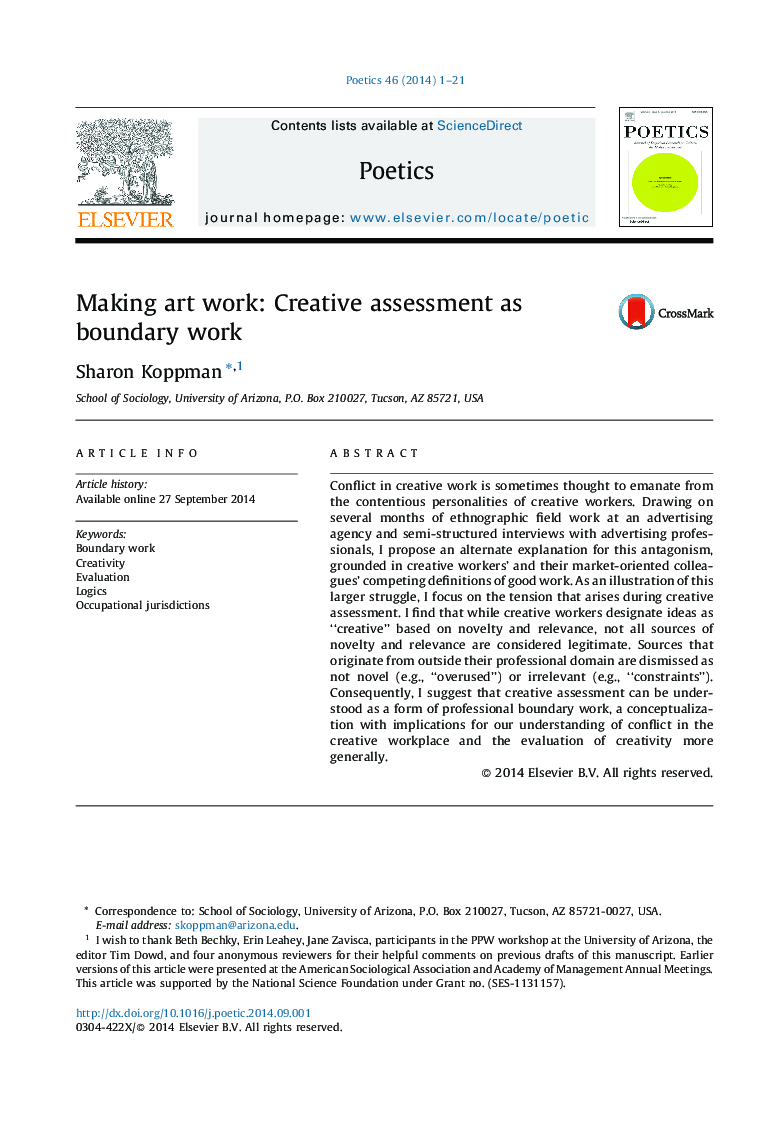| Article ID | Journal | Published Year | Pages | File Type |
|---|---|---|---|---|
| 1128387 | Poetics | 2014 | 21 Pages |
•This article challenges the assumption that conflict in creative work emanates from contentious personalities.•Based on ethnographic field work and semi-structured interviews.•I find that the assessment of creativity depends on the use of novelty and relevance considered legitimate by the occupational community.•In this context, creative assessment is patterned by professional interest and conflict results from competing professional interests.
Conflict in creative work is sometimes thought to emanate from the contentious personalities of creative workers. Drawing on several months of ethnographic field work at an advertising agency and semi-structured interviews with advertising professionals, I propose an alternate explanation for this antagonism, grounded in creative workers’ and their market-oriented colleagues’ competing definitions of good work. As an illustration of this larger struggle, I focus on the tension that arises during creative assessment. I find that while creative workers designate ideas as “creative” based on novelty and relevance, not all sources of novelty and relevance are considered legitimate. Sources that originate from outside their professional domain are dismissed as not novel (e.g., “overused”) or irrelevant (e.g., “constraints”). Consequently, I suggest that creative assessment can be understood as a form of professional boundary work, a conceptualization with implications for our understanding of conflict in the creative workplace and the evaluation of creativity more generally.
